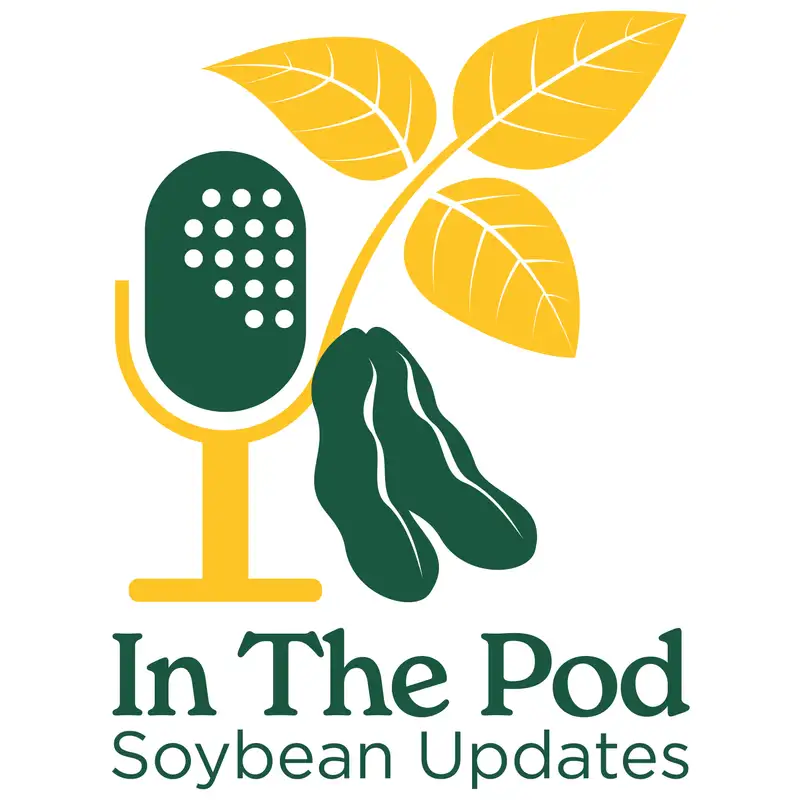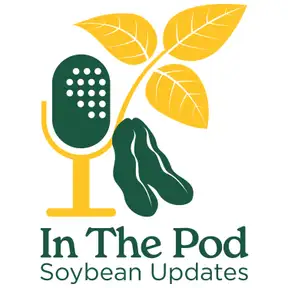08/07/25 Profit and Practice: Balancing ROI with Soil Health
You're listening to in the pod, soybean updates, a weekly trek into the latest soybean information from NDSU Extension. Cover crops, are they worth it? Do the benefits outweigh the drawbacks? Marisol Berti, NDSU forage and cover crops researcher, has answers. Marisol, why should soybean growers think about using cover crops?
Marisol Berti:Cover crops are very important in this region because of the conditions we have and during the winter where we have soils that are very erodible by wind. Soybean doesn't leave much residue on the soil. So even if it's a no till situation, there's still very little residue covering the soil when it's harvested. But it's very important to put it in the context of the rotation with soybean crops and see what works and what doesn't, but we need to protect our soils. We are one of the most fertile soils in the country, and we've loosened it to wind erosion, like especially we get a dry spring with a lot of wind. We can lose the top layer of the soil, which is the one that has a lot of the nutrients and organic matter. We want to have the soil cover year round. That's one of the soil health principles. Keep roots in the ground and cover all year round. We need to improve the soil health because soil health has benefits, aggregate stability, and water infiltration. So it really helps in the long term to improve the soils and finally the yields.
Bruce Sundeen:How do you fit cover crops into your rotation?
Marisol Berti:You know, some producers are very experts on these. But if you're new to these, well, you have to think first is what crop you have before soybean, what crop you're gonna have after. Right? What's your rotation look like? And especially what your herbicide program that you have for whatever crop is before you're gonna plant your cover crops. Usually, cover crops are planted in the fall after the harvest of the main crop. So let's say you have a cereal like wheat or barley that's being harvested. But if you had applied any residual herbicides in the wheat, there are certain species of cover crops that are not gonna grow, like radish and turnips. It's very important to know that package, to know what you have before and after. After this, you're gonna have corn, then you probably think on a different cover crops that winter kill because corn is planted early, and you don't want to have some cover crop that will hurt the corn yields. That's why it's very important to know before and after, what you're planning to put in there, what are your planting dates, and your chemical programs on the crops to be able to choose what cover crop you can use according to the benefits that each cover crop provides.
Bruce Sundeen:What's the downside of cover crops?
Marisol Berti:Well, the option of cover crops is cost. Right? So it's always gonna be where is my return on investment. Right? Where's my bottom line I have to spend on seed and on planting? Where do I get that money back? One of the things people think is negative. Right, because it's hard to monetize the soil health benefits. Sometimes the other disadvantage is, well, we go with the seasons, you know. We can plant a cover crop and then, like last fall, it didn't rain the whole fall. None of the cover crops came and didn't protect the soil at all. We can be too dry, too wet. It's a learning process. Farmers have been using cover crops for years, especially in a no till situation. They already know what are those variations, and they're good at working on them.
Bruce Sundeen:Marisol, what are the basic benefits of cover crops?
Marisol Berti:The basic benefit is soil health, and soil health is a really big concept. But one of the main things is soil aggregate stability. Those are, like, how the particles of the soil kinda clump together. If they're very dispersed, then when it rains, they seal the soil and the water runs off instead of going into the soil. When you have those little, you know, package, little particles of soil, then the water infiltrates and moves into the soil. So in a way, you're conserving soil. Another big benefit, especially of winter hardy cover crops like cereal rye, is that they come back in the spring. And if we get a wet spring, they move water off the soil. The soil can dry faster for planting. So one of the things the farmers say, oh, my planting's gonna be delayed if I have cover crops. Well, if you have a green cover crop, it will take the water, help the soil to dry up so you can plant. Along with many other nutrient cycling benefits, microbiome, putting roots in the soil gives food to all those microbes in the soil and triggers a whole kinds of beneficial reactions and products that happen on the soil that in the long term will help all your crops and your rotation.
Bruce Sundeen:Thanks, Marisol. Our guest has been Marisol Berti, NDSU forage and cover crops researcher. You're listening to In the Pod, soybean updates, a weekly trek into the latest soybean information from NDSU Extension, supported by the North Dakota Soybean Council.

